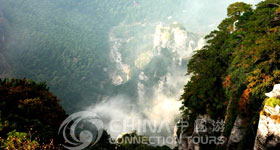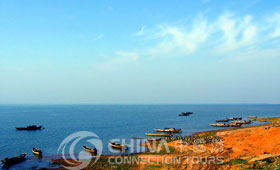
 Jiujiang is located in the northern part of Jiangxi Province on the banks of the Yangtze River. It has been a flourishing commercial center and well-known as one of the "four great rice cities" and one of the "three great tea cities" since ancient times. Beautiful Mount Lushan rises in the city and the Yangtze River flows in the surrounding area. In the city lies the Poyang Lake, one of the five most famous lakes in China.
Jiujiang is located in the northern part of Jiangxi Province on the banks of the Yangtze River. It has been a flourishing commercial center and well-known as one of the "four great rice cities" and one of the "three great tea cities" since ancient times. Beautiful Mount Lushan rises in the city and the Yangtze River flows in the surrounding area. In the city lies the Poyang Lake, one of the five most famous lakes in China.
There are nine rivers that converge in the city, the Ganjiang, Po, Yu, Xiu, Gan, Xu, Shu, Nan and Peng, hence the name Jiujiang (nine rivers). Nine is the largest odd number and Chinese people think it has special meaning. The city first came into being as an administrative division during the Qin Dynasty about 2, 200 years ago.
Jurisdiction
The city covers a total area of 188,000 square km, with a population of 4.66 million. There are nine counties, one city, two districts, one bureau and two development regions within the council jurisdiction.
Geography and Climate
The Chinese say, "Jiujiang is a city with six mountains, two waters, cropland, road and manor." The land in the east and west area is high and the middle part is plain and low. Mountains and hilly areas occupy about 60% of the total land of the city.
Jiujiang is situated in the area between the central sub-tropical and northern sub-tropical regions. It enjoys a temperate climate, ample rainfall, abundant sunshine and four distinctive seasons. The annual  averagetemperature is 16.4 degree Celsius.
averagetemperature is 16.4 degree Celsius.
Jiujiang is endowed with wonderful scenery, a beautiful setting and a large variety of places of historic interest. There are Mt. Lushan, the Yangtze River, Poyang Lake and as many as 400 scenic spots around the city. In addition, there are lots of historical attractions in Jiujiang, including Xunyang Tower, Pipa Pavilion, and Bailudong Academy.

